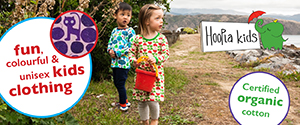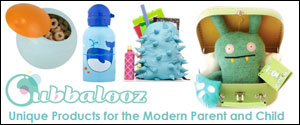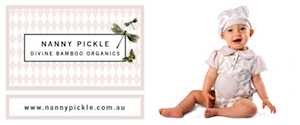labour and birth
Every birth is different and babies vary regarding when they arrive and how long they take. Your Lead Maternity Carer (LMC) can answer any questions you might have about your labour and birth and how you should prepare.
When you think you are in labour, tell your LMC. S/he will then advise you what to do next. This may be that s/he will visit and assess you in your home, or meet you at the maternity hospital, or s/he make some other suggestion(s).
It is also the M ¯ aori family/wh¯ anau’s choice for the placenta/whenua to be kept and returned to them according to M ¯aori tikanga and kaupapa.
Some alternative therapies, such as relaxation and breathing techniques, a warm bath or shower, the birthing pool or a TENS machine, are helpful. Medicines/rongo¯a, massage/mirimiri and prayer/karakia, can also be helpful. Homeopathy or aromatherapy are also commonly used to assist with pain relief. Discuss any questions you might have about alternative medicines and therapies with your LMC. The use of gas, injections of drugs, or an epidural or spinal anaesthetic, can be used if these other methods have not worked. However, as all drugs pass through the umbilical cord to the baby up until the time the cord is cut, only necessary drugs should be used.
• placing a medicated gel close to the cervix
• breaking the membrane which holds the amniotic fluid and your baby.
Inductions are likely to lead to increased intervention such as a ventouse or forceps birth or a caesarean section.
Augmentation (assisting a labour which has already commenced) can be done by using the following:
• breaking the membrane which holds the amniotic fluid and your baby
• a hormone drip to strengthen the contractions.
Article provided courtesy of The Ministry of Health
When you think you are in labour, tell your LMC. S/he will then advise you what to do next. This may be that s/he will visit and assess you in your home, or meet you at the maternity hospital, or s/he make some other suggestion(s).
Deciding who will support you at the birth
Plan ahead about who you would like to support you at your baby’s birth. You may wish to have only your partner with you or you may like other members of your family/wh¯anau. You may wish to include cultural preparation in the way of prayers/karakia for a safe birth.The stages of labour
There are three main stages in labour. The time taken for each stage will vary from woman to woman. In the first stage the cervix opens, in the second stage the baby is pushed down through the vagina and is born, and in the third stage the placenta (whenua) comes away from the wall of the uterus and is pushed out through the vagina. The membrane that holds the amniotic fluid and your baby (often called ‘the waters’) can break at any time. Often this happens near the end of the first stage or at the beginning of the second stage of labour. Sometimes the waters are deliberately broken.It is also the M ¯ aori family/wh¯ anau’s choice for the placenta/whenua to be kept and returned to them according to M ¯aori tikanga and kaupapa.
Coping with pain
There are several things you and your partner and family/wh¯anau can do to help you cope with the pain of labour.Some alternative therapies, such as relaxation and breathing techniques, a warm bath or shower, the birthing pool or a TENS machine, are helpful. Medicines/rongo¯a, massage/mirimiri and prayer/karakia, can also be helpful. Homeopathy or aromatherapy are also commonly used to assist with pain relief. Discuss any questions you might have about alternative medicines and therapies with your LMC. The use of gas, injections of drugs, or an epidural or spinal anaesthetic, can be used if these other methods have not worked. However, as all drugs pass through the umbilical cord to the baby up until the time the cord is cut, only necessary drugs should be used.
Variations in labour and birth
No two births are the same. You may need extra help at your baby’s birth.Induction/Augmentation of labour
Induction is when labour is started artificially because of risk to the mother or baby if the pregnancy went on any longer. Induction can be done by using the following:• placing a medicated gel close to the cervix
• breaking the membrane which holds the amniotic fluid and your baby.
Inductions are likely to lead to increased intervention such as a ventouse or forceps birth or a caesarean section.
Augmentation (assisting a labour which has already commenced) can be done by using the following:
• breaking the membrane which holds the amniotic fluid and your baby
• a hormone drip to strengthen the contractions.
Ventouse/forceps birth
Ventouse or forceps may be used to help deliver your baby. A ventouse is a suction cap that is placed on the baby’s head and by firm pulling the baby can be born. The same method is used for a forceps birth with the forceps being placed around the baby’s head. An episiotomy is usually done for a ventouse or forceps birth. An episiotomy is when the perineum (area round the vaginal opening) is cut to make the opening bigger. Stitches are needed afterwards.Caesarean section
A caesarean section is the removal of the baby from the uterus by surgery. This should only be done when there are medical reasons for it. An epidural or spinal anaesthetic is generally given. A general anaesthetic may be used when an emergency caesarean section is needed. After the operation, stitches or clips are used to seal up the wound. These either dissolve or are removed about five to eight days later.Article provided courtesy of The Ministry of Health
advertisements






| 1. On the go accessories for school and preschool - these will make your child's school day! 2. Kid's bedroom art ideas - brighten up their spaces 3. How to dress your child for a special occasion 4. Frozen party - Gorgeous but manageable ideas for your Disney Frozen fan 5. Creamy Harissa Slow Cooked Beef - This recipe is warming and creamy. |
|
|
| 1. Flying with kids - How do the words “airplane flight” and “children” make you feel?... 2. Horse Party - ultimate horse themed party. 3. Toddlers - Living with little people: patience and understanding required! 4. Lalaloopsy party - How to craft your party around a centrepiece 5. Superkids scroggin - An innovative lunchbox idea |
|
|
| 1. Scone peapods - the cutest and most delicious vegetables around 2. Witchery Kids Clothing - with their fun blog showing the clothes in action! 3. Baby Clothes - Upcycled keepsakes. 4. Horse Party - ultimate horse themed party. 5. Best indoor playsets - Unbelievable fun most of us can only dream of! |





